 St. Carlo Acutis
St. Carlo Acutis
Explore the Saints
Sts. Cornelius and Cyprian
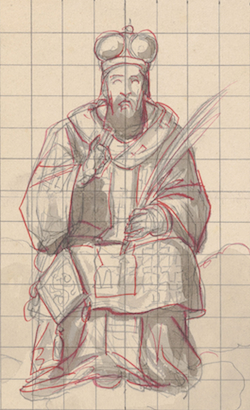
Sts. Cornelius and Cyprian were contemporaries and friends who supported one another in a time of ecclesial divisions and imperial persecution.
St. Cornelius was a priest in Rome during a period of intense persecution of Christians by the Emperor Decius in the mid-third century. During these persecutions, many Christians were martyred, including the Pope, Fabian. Some Christians chose to save their own lives by agreeing to make sacrifices to the Roman gods. Certain members of the Church at Rome held that these Christians could never be readmitted to the community of the faithful, regardless of their repentance. The leader of this position was the priest Novatian. Others believed that the lapsed Christians could return to the Church after a period of public penance. This contingent was led by Cornelius and, in North Africa, Cyprian.
While the persecutions raged on, it was impossible to elect a new Pope and the Church in Rome operated in hiding for more than a year. Eventually, Decius left Rome on a military campaign and the priests leading the community met in secret to elect a new Pope. Much to his surprise, Cornelius was chosen over Novatian. Cyprian wrote that Cornelius was elected, “by the judgment of God and of Christ, by the testimony of most of the clergy, by the vote of the people, with the consent of aged priests and of good men.”
In his brief papacy, Cornelius was able to cement his position favoring forgiveness for lapsed Christians through a council which he convened in Rome. The council condemned the rigorist position of the Novatians. Cornelius was arrested shortly thereafter in the ongoing persecutions. He was exiled in 251 and died in 253. Some early sources claim that he died from the hardship of banishment while later sources state that he was martyred by beheading.
St. Cyprian influenced the growth of the early Church, especially in Africa, where he was seen as the most important leader of the faithful in his time.
He was born in the year 200 in Carthage, and was raised without any particular religion. As an adult, he was active in the social and public life of Carthage as a teacher and lawyer. He came to know an older priest, Caecilian, who inspired him to explore the Christian life. Cyprian saw Caecilian as a father-figure and guardian angel. The priest returned the affection, and when he died, he entrusted the care of his family to Cyprian.
Under Caecilian’s care, Cyprian was baptized, reformed his life and took on a vow of chastity. His conversion to Christianity was so complete that he took on the study of Scripture and the saints who explained it.
He was soon ordained as a priest, and later was named bishop of Carthage. At first, he resisted the responsibility and tried to flee the town, but eventually relented and accepted the role. An early biographer described him as a charitable and courageous bishop who inspired respect and love.
A year after taking on his role as bishop, the Roman empire instituted a policy of persecuting Christians. A mob mentality ensued, and crowds called for Cyprian to be thrown to the lions. He fled and hid so as to continue to encourage the faithful in his care with letters. He wrote those who were imprisoned for their faith and organized priests to visit them to bring them holy Communion.
As in Rome, the Church in Carthage struggled to decide how to treat Christians who had renounced the faith during the persecution but wanted to return to the Church when others had suffered imprisonment or death. Cyprian was active in this debate, urging a strict policy, but enforcing it with mercy. He appealed to Pope Cornelius in Rome and two mutually reinforced the orthodox position of readmitting Christians to the community after penance.
A plague struck Carthage for several years between 252 and 254, and Cyprian did much to care for those who were suffering. He encouraged his flock to help the sick, whether they were Christian or not, and he especially urged the wealthy to offer their material resources. “Do not let something rest in your wallet that might be helpful for the poor,” he said.
The persecution of Christians intensified—laws prohibited the faithful from gathering and commanded bishops and priests to offer sacrifice to the imperial gods. Cyprian was arrested and sent into exile when he refused to renounce the faith. He was further condemned to death by beheading so as to be an example to others, and when his sentence was read, he replied, “Thanks be to God.”
Relics of St. Cyprian rest in the reliquary chapel in the Basilica, and this sketch of the saint is part of the collection of the Raclin Murphy Museum of Art. It is an early study prepared by the artist, Luigi Gregori, who painted the murals in the Basilica, though Cyprian was not included in the final group of saints who are depicted there.
Sts. Cornelius and Cyprian, in your friendship you protected the unity of the early Church and suffered under persecution for your faithfulness, pray for us!
Image Credit: Luigi Gregori (Italian, 1819-1896), Saint Cyprian, 1886, ink on paper. Raclin Murphy Museum of Art: Gift of Luigi Gregori, AA2009.056.330.
Search Saints
 St. Carlo Acutis
St. Carlo Acutis
 St. Joseph of Cupertino
St. Joseph of Cupertino
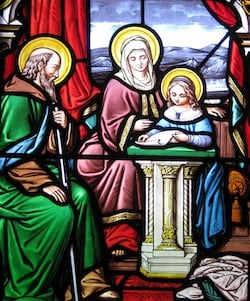 Sts. Anne and Joachim
Sts. Anne and Joachim
 St. Robert Bellarmine
St. Robert Bellarmine
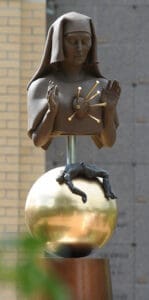 Our Lady of Sorrows
Our Lady of Sorrows
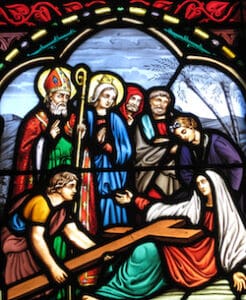 The Exaltation of the Holy Cross
The Exaltation of the Holy Cross
 St. John Chrysostom
St. John Chrysostom
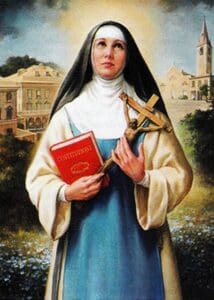 Blessed Victoria Strata
Blessed Victoria Strata
 St. John Gabriel Perboyre
St. John Gabriel Perboyre
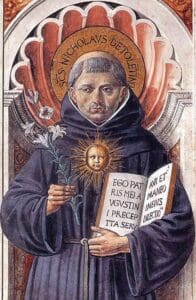 St. Nicholas of Tolentino
St. Nicholas of Tolentino
 St. Peter Claver
St. Peter Claver
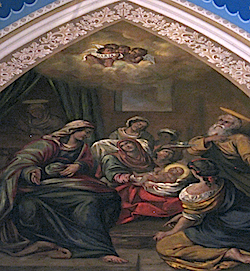 Feast of the Birth of Mary
Feast of the Birth of Mary
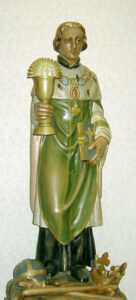 St. Cloud
St. Cloud
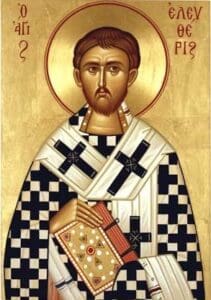 St. Eleutherius
St. Eleutherius
 St. Teresa of Calcutta
St. Teresa of Calcutta
 St. Rose of Viterbo
St. Rose of Viterbo
 Pope St. Gregory the Great
Pope St. Gregory the Great
 Blessed Jean-Marie du Lau and the Martyrs of September
Blessed Jean-Marie du Lau and the Martyrs of September
 St. Anna the Prophetess
St. Anna the Prophetess
 St. Pammachius
St. Pammachius
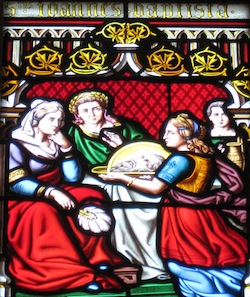 Feast of the Beheading of John the Baptist
Feast of the Beheading of John the Baptist
 St. Augustine
St. Augustine
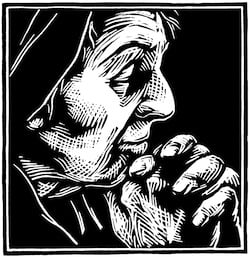 St. Monica
St. Monica
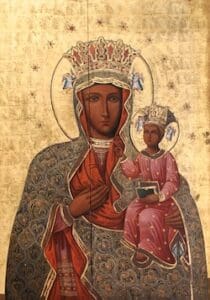 Our Lady of Czestochowa
Our Lady of Czestochowa

